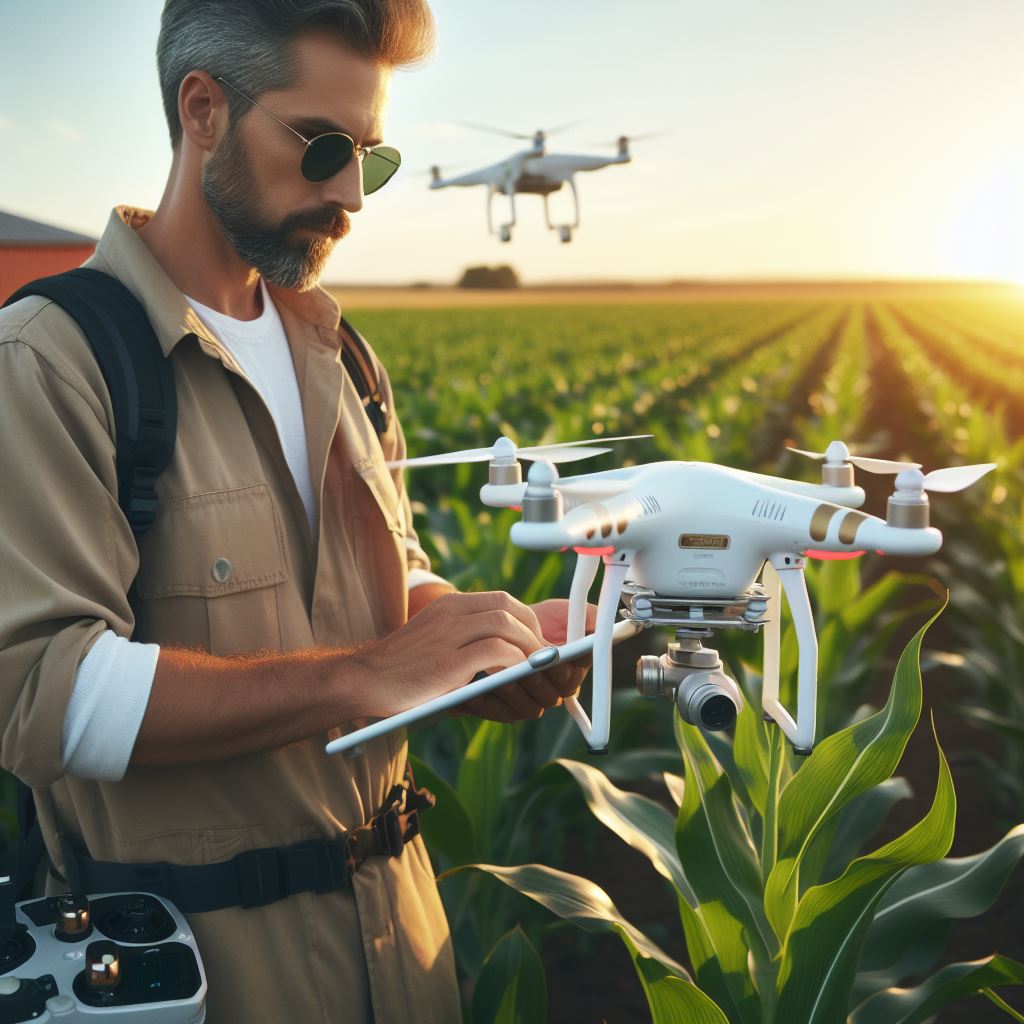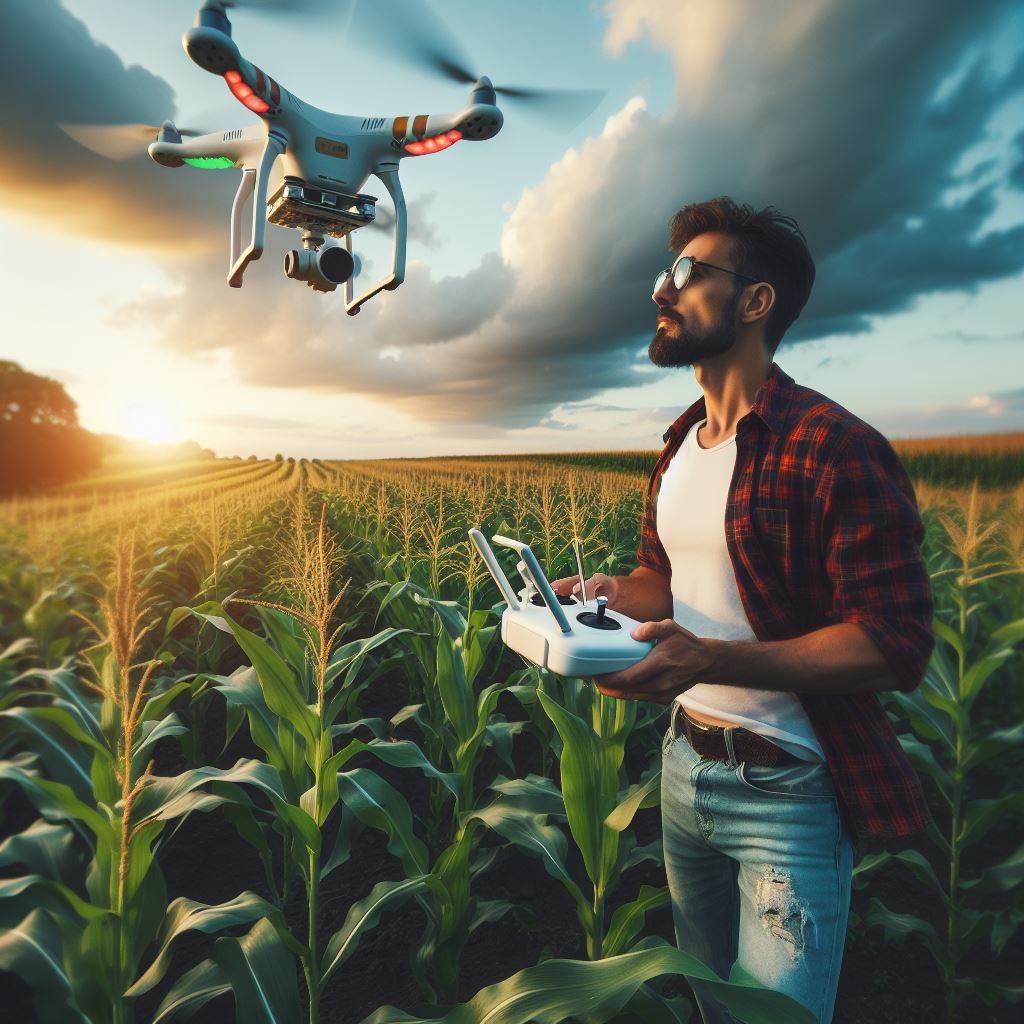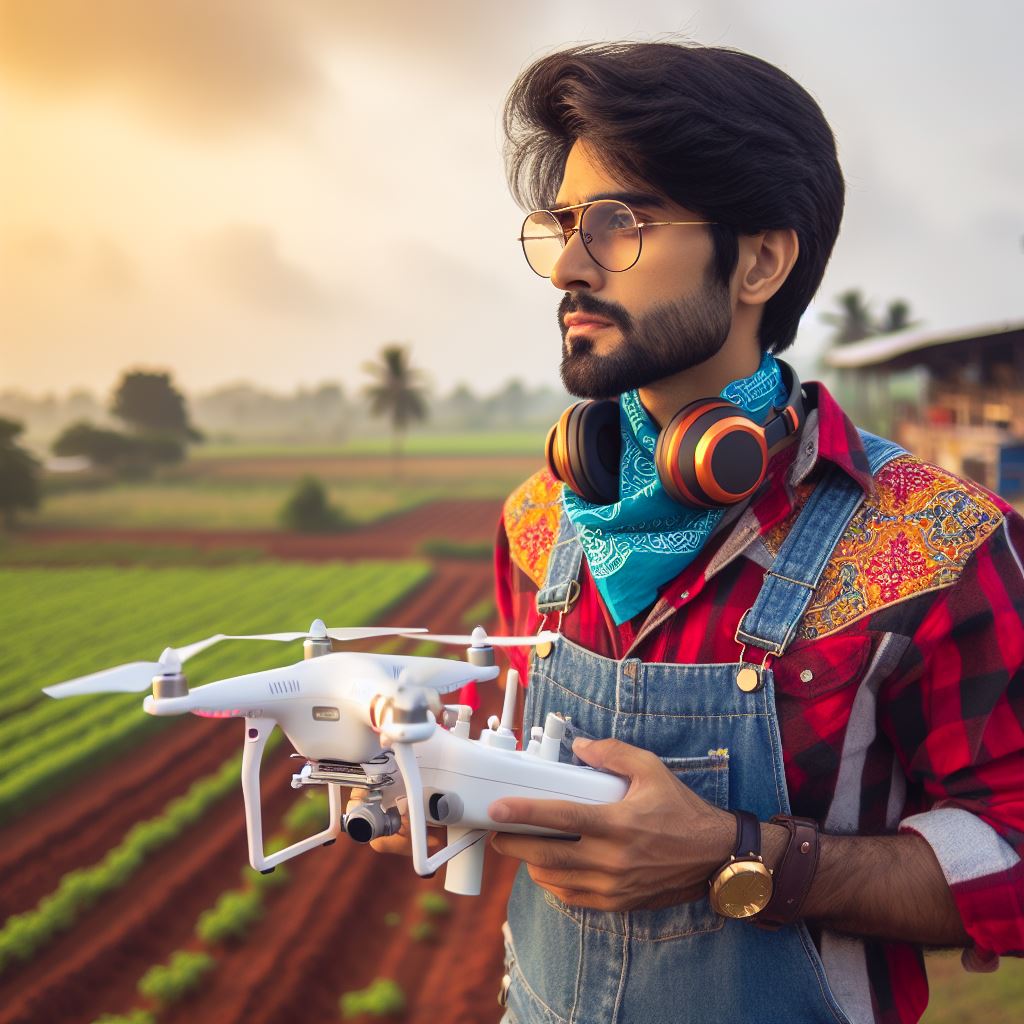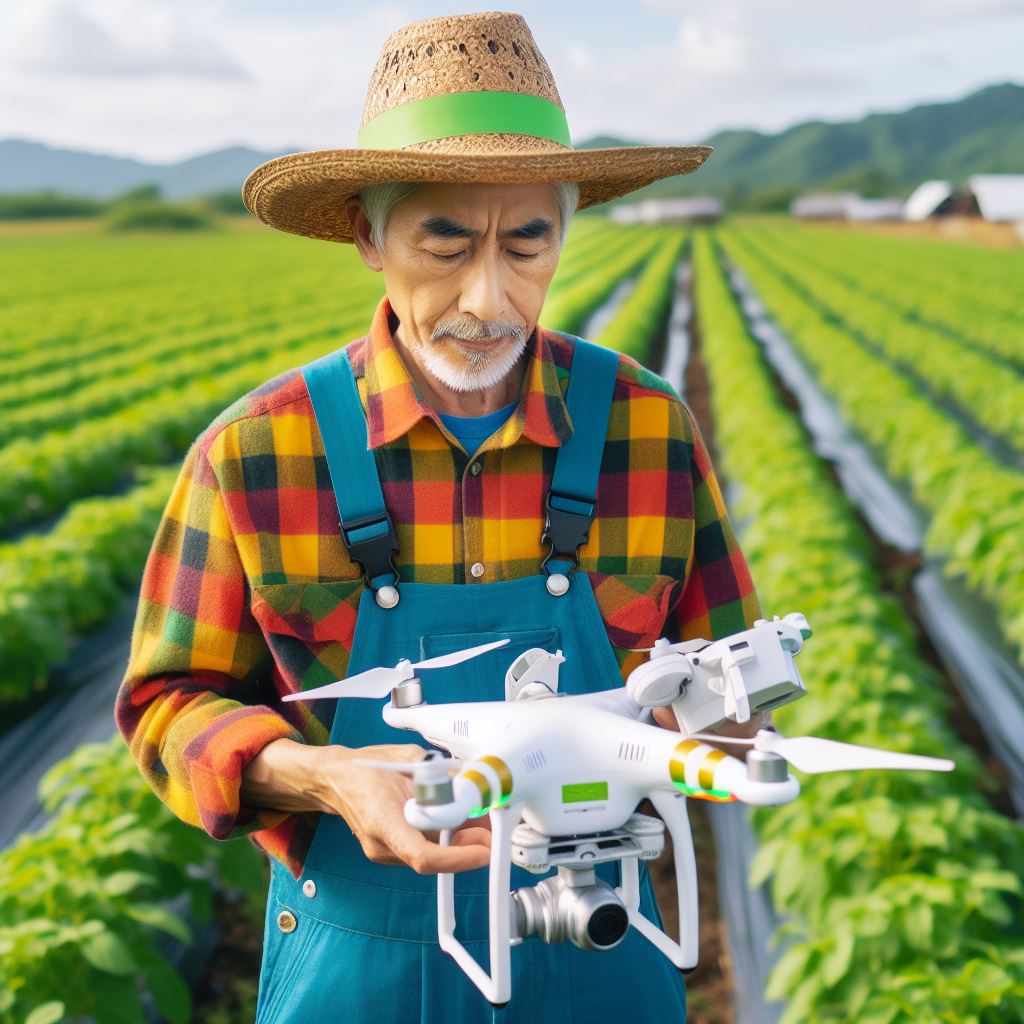Introduction
Brief explanation of the importance of crop health
Crop health is vital for supporting growing populations through sustainable agriculture.
As available farmland decreases while food demand rises, pressing challenges confront farmers seeking to increase yields.
Suboptimal growing conditions directly threaten crop survival and farmers’ livelihood, jeopardizing food security worldwide.
Better crop monitoring enables early treatment and resilience, unlocking higher productivity potential on shrinking usable land worldwide.
Overview of the role of technology in agriculture
The urgent need for improved crop health insights demands disruptive agricultural technologies to empower farmers with real-time crop data, automated monitoring, and timely diagnostics.
Agricultural technology innovations like GPS, remote sensing, and high-tech sensors unlock unprecedented capability to proactively identify crop issues, enabling precise responses for better outcomes – more from less.
For sustained agricultural success and food security amidst growing constraints, transformative technologies enabling next-level precision agriculture and climate adaptation will prove indispensable going forward.
No technology demonstrates greater potential benefits for agriculture than drones combined with advanced sensors and analytics.
Next, we explore game-changing applications of drone technology enabling modern farmers to elevate and optimize crop development, soil quality, water use, and treatment applications through near real-time data for resiliency, efficiency, and sustainability gains.
Traditional methods of monitoring crop health
Manual visual inspection
Traditional methods of monitoring crop health involve manual visual inspection conducted by farmers.
They physically inspect the crop fields to identify any signs of diseases, pests, nutrient deficiencies, or any other issues that may affect crop growth and yield.
Manual visual inspection requires farmers to walk through the fields, closely examining each plant for any abnormalities or symptoms.
They look for changes in leaf color or texture, wilting, lesions, insect infestations, or any other visual indications of poor crop health.
While this method has been practiced for centuries, it has several limitations.
Firstly, it is time-consuming and labor-intensive, as farmers need to cover large areas of farmland on foot.
Transform Your Agribusiness
Unlock your farm's potential with expert advice tailored to your needs. Get actionable steps that drive real results.
Get StartedSecondly, it is subjective and relies heavily on the farmer’s expertise and experience.
Different farmers may interpret the same signs differently, leading to inconsistent results.
Satellite imagery
Another traditional method of monitoring crop health is through the use of satellite imagery.
Satellites equipped with high-resolution cameras capture images of crop fields from space.
These images provide a bird’s eye view of the entire crop area, allowing farmers to assess the overall health and vigor of the plants.
Satellite imagery enables farmers to identify patterns and variations in crop growth across their fields.
They can detect differences in vegetation index, which indicates the amount of chlorophyll present in the plants and reflects their health and vigor.
By analyzing these images, farmers can identify areas that require immediate attention and take appropriate measures.
However, satellite imagery also has its drawbacks.
One major limitation is the lack of real-time data.
Images from satellites are usually captured at specific intervals, which may not be frequent enough to detect rapid changes in crop health.
Moreover, cloud cover can hinder the availability of clear images, making it challenging to monitor crops accurately.
Limitations and drawbacks of these methods
Both manual visual inspection and satellite imagery have their limitations and drawbacks when it comes to monitoring crop health. These include:
- Time-consuming and labor-intensive: Manual visual inspection requires farmers to spend a significant amount of time walking through fields, while satellite imagery may not provide real-time data.
- Subjectivity: Manual visual inspection can vary in interpretations between different farmers, potentially leading to inconsistent results.
- Lack of real-time data: Both methods may not capture rapid changes in crop health due to limited intervals for inspection or satellite image capture.
- Reliance on external factors: Satellite imagery can be hindered by cloud cover, affecting the availability of clear images.
Given these limitations, there is a need for more efficient and accurate methods to monitor crop health.
This is where drones come into play, revolutionizing the way farmers assess and manage their crops.
Read: Precision Agriculture: How Drones Change the Game
Introduction to drones in agriculture
Definition and purpose
Despite being relatively new to the agriculture industry, drones have rapidly gained popularity for crop health monitoring.
Their ability to capture high-quality images and collect precise data has revolutionized the way farmers monitor their crops.
Advantages of using drones for crop health monitoring
The advantages of using drones for crop health monitoring are numerous and significantly contribute to the efficiency of agricultural practices.
Firstly, drones provide a faster and more efficient way of monitoring crop health compared to traditional methods.
They can cover large areas of crops in a short period, allowing farmers to monitor their fields more frequently.
This timely monitoring is crucial for detecting and addressing any potential issues that may arise, such as pest infestation or nutrient deficiencies.
Furthermore, the use of drones in crop health monitoring provides a higher level of accuracy and precision.
Equipped with high-resolution cameras and sensors, drones can capture detailed images and collect data on various crop health indicators.
Showcase Your Farming Business
Publish your professional farming services profile on our blog for a one-time fee of $200 and reach a dedicated audience of farmers and agribusiness owners.
Publish Your ProfileThis data can then be analyzed to identify areas that require attention, optimize irrigation, and detect early signs of diseases.
In addition to their efficiency and accuracy, drones offer cost-effective benefits for farmers.
By replacing manual labor with drones, farmers can significantly reduce operational costs.
With fewer labor-intensive tasks, farmers can allocate resources more effectively and focus on critical decision-making processes.
Real-time monitoring is another advantage of using drones for crop health monitoring.
With live video feeds and immediate data transmission, farmers can quickly identify areas of concern and take immediate action.
Whether it’s adjusting irrigation levels or applying targeted treatments, real-time monitoring allows farmers to be proactive in crop management.
Challenges and regulations
However, despite their numerous advantages, the use of drones in agriculture is not without challenges and regulations.
Aviation authorities have imposed regulations on the use of drones, ensuring safety and preventing misuse.
These regulations may include restrictions on flight altitudes, licensing requirements, and limitations on flying near populated areas.
Privacy concerns have also been raised with the use of drones in agriculture.
The ability of drones to capture detailed images and data has sparked debates on privacy infringement.
There is a need for clear guidelines to address these concerns and protect the privacy of individuals.
Lastly, technical limitations can hinder the full potential of drone usage in crop health monitoring.
Unfavorable weather conditions such as strong winds or heavy rain can affect the flight stability of drones.
Battery life limitations restrict long-term monitoring or require additional charging stations in remote areas.
Essentially, drones have emerged as a game-changer in crop health monitoring in agriculture.
Their efficiency, accuracy, cost-effectiveness, and real-time monitoring capabilities offer significant benefits to farmers.
While challenges and regulations exist, the potential of drone usage in agriculture is vast and promises a brighter future for crop health management.
Read: Drones in Agriculture: The Future of Farming
Ways in which drones are leading the way in crop health monitoring
Drones have revolutionized the way crop health is monitored and managed.
With their advanced capabilities, drones are leading the way in crop health monitoring in several ways.
Aerial imaging and mapping of the crops
Drones equipped with high-resolution cameras capture detailed images of crops from above, providing crucial information for farmers and agronomists.
These images allow for a comprehensive understanding of crop health.
- The high-resolution images captured by drones offer valuable insights into the condition of crops. These images provide detailed information about plant health, growth patterns, and potential issues.
- Drones can identify areas of stress or the presence of diseases in crops at an early stage. By detecting these issues early on, farmers can take proactive measures to mitigate the impact and prevent further spread.
Early detection and intervention with precision spraying
Drones enable precision spraying of fertilizers, pesticides, and herbicides, aiding in early detection and intervention.
- With drones, targeted application of fertilizers, pesticides, and herbicides becomes possible. Drones can precisely spray these substances on specific areas, reducing wastage and minimizing the environmental impact.
- By using drones for precise spraying, farmers can optimize chemical usage and maximize effectiveness. This approach minimizes the risk of overusing chemicals and helps in maintaining a healthy balance in crop health management.
Continuous monitoring of crops
Drones enable continuous monitoring of crops, providing real-time data and predictive analytics for better decision-making.
- Drones equipped with sensors and cameras collect real-time data on plant health and environmental conditions. This data is instantly accessible to farmers and agronomists for timely analysis.
- The data collected by drones can be used for predictive analytics, allowing farmers to make informed decisions about crop management. By analyzing patterns and trends, farmers can predict potential issues and take proactive measures to ensure optimal crop health.
In general, drones are leading the way in crop health monitoring by providing aerial imaging, early detection and intervention through precision spraying, and continuous monitoring with real-time data collection and analysis.
These advancements empower farmers and agronomists to make informed decisions and optimize crop health management.
With drones, the future of agriculture looks promising, with increased efficiency, reduced resource usage, and improved crop yields.
Read: Revolutionizing Farms: Drones in Crop Monitoring
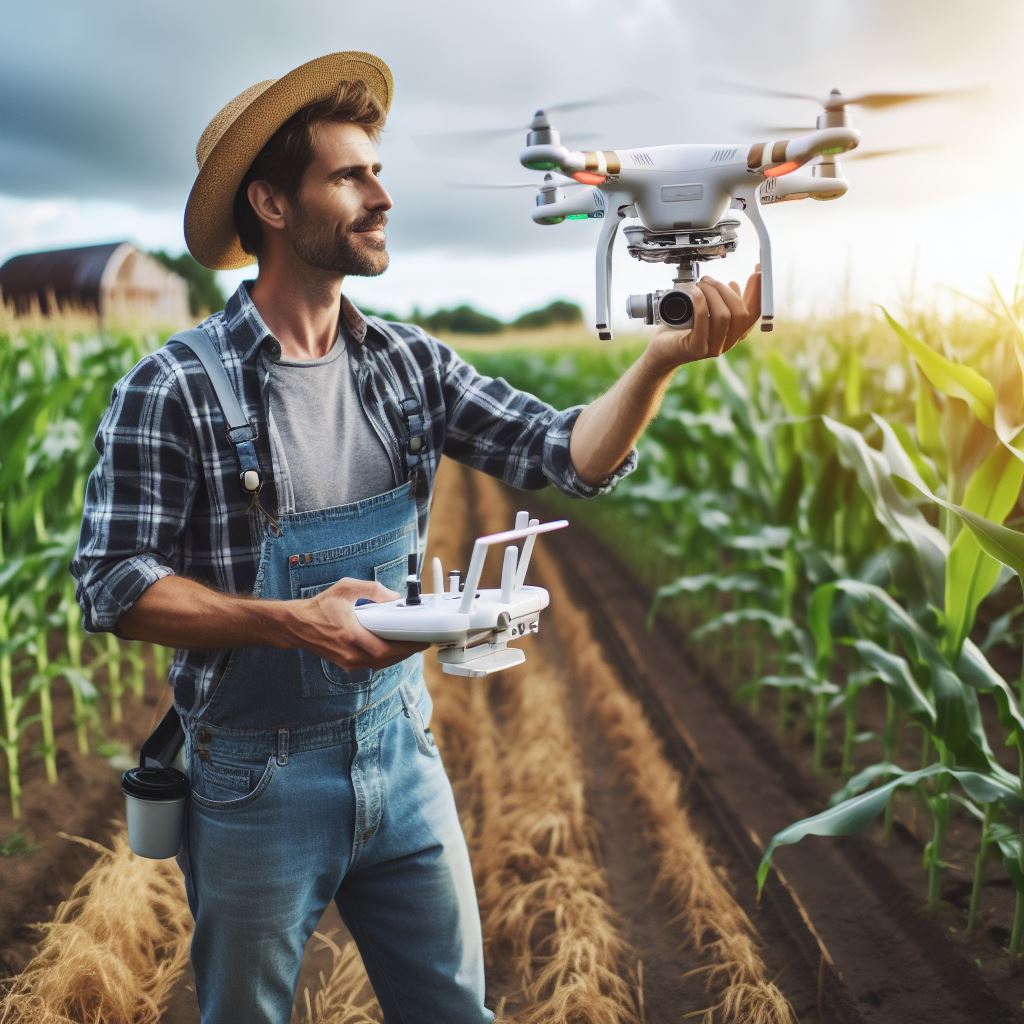
Case studies showcasing the success of drones in crop health monitoring
Example 1: Increased yields and reduced costs in a corn farm
One successful case study highlighting the effectiveness of drones in crop health monitoring comes from a corn farm.
By utilizing drone technology, the farm was able to revolutionize its operations.
Implementation of drone technology
Firstly, the implementation of drone technology allowed the farm to efficiently monitor and assess the health of its corn crop.
The drones were equipped with high-resolution cameras and sensors, enabling them to capture detailed images and collect valuable data.
This data was then analyzed by specialized software, which identified areas of concern such as nutrient deficiencies, pest infestations, and areas prone to water stress.
By identifying these issues early on, the farm was able to take appropriate actions to mitigate crop damage and optimize yields.
The use of drones in crop health monitoring also resulted in significant cost savings for the farm.
Traditional methods of monitoring crops, such as manual scouting or satellite imagery, proved to be time-consuming and less accurate.
Positive impact on crop health and profitability
With drones, the farm could cover larger areas in less time and with higher precision.
This reduced the need for manual labor and allowed for more targeted and efficient use of crop inputs, such as fertilizers and pesticides.
Showcase Your Farming Business
Publish your professional farming services profile on our blog for a one-time fee of $200 and reach a dedicated audience of farmers and agribusiness owners.
Publish Your ProfileAs a result, the farm experienced increased yields and reduced costs, ultimately improving profitability.
Example 2: Rapid identification and control of fungal infection in vineyards
Another compelling case study demonstrates the value of drones in the rapid identification and control of fungal infection in vineyards.
Fungal infections can cause significant damage to grapevines, resulting in reduced wine quality and financial losses for vineyard owners.
Efficient drone-based surveying and mapping
By utilizing drone technology, vineyard owners can quickly survey and map their entire vineyard, allowing for early detection of any signs of fungal infection.
The drones capture high-resolution images, which are then carefully analyzed using specialized software.
This analysis enables the identification of specific areas affected by fungal infection, allowing vineyard owners to intervene promptly.
Early intervention is crucial in controlling the spread of fungal diseases and can prevent the infection from spreading to healthy vines.
Quick intervention leading to improved crop health
With drones, vineyard owners can apply targeted treatments and adjust their management practices in a timely manner.
This leads to improved crop health and ultimately results in higher-quality grapes for winemaking.
The efficiency and speed of drone-based surveying and mapping contribute to minimizing the economic losses associated with fungal infections in vineyards.
By catching infections early on, vineyard owners can take effective measures to control the spread of diseases, reducing the need for costly treatments and preserving their crop’s value.
In essence, these real-life case studies exemplify the significant successes that drones have achieved in crop health monitoring.
Drones have proven their worth in increasing yields, reducing costs, and enabling rapid intervention to ensure crop health.
As drone technology continues to advance, we can expect even more remarkable achievements in the field of crop health monitoring.
Read: Drones in Agri: Irrigation Game Changer
Challenges and Future Considerations
Regulatory framework for drone usage in agriculture
- The use of drones in agriculture poses regulatory challenges that need to be addressed.
- Government agencies must create guidelines and regulations for the safe and responsible use of drones in crop health monitoring.
- These regulations should ensure the proper training and licensing of drone pilots.
- Additionally, regulations should address issues such as flight restrictions, altitude limits, and drone insurance requirements.
- Developing a clear regulatory framework will promote the widespread adoption of drones in agriculture.
Data management and privacy concerns
- One of the major considerations in drone usage is the management and privacy of collected data.
- Farmers and drone operators need to have clear policies on data storage, transfer, and sharing to protect sensitive information.
- Data encryption and secure cloud-based storage solutions can address privacy concerns.
- Data ownership and control should be defined to establish trust between farmers and drone service providers.
- Ensuring that data is used for crop health monitoring purposes only is crucial to prevent misuse.
Further advancements and potential future applications of drone technology in crop health monitoring
- As drone technology continues to evolve, there are exciting potential applications in crop health monitoring.
- Advancements in sensor technology can enable drones to collect more detailed and accurate data about crop health.
- Integration with artificial intelligence and machine learning algorithms can enhance data analysis and provide actionable insights.
- Drones equipped with spray systems can be used for targeted and precise crop treatment, reducing the need for chemical use.
- Improved battery life and autonomous flight capabilities will increase the efficiency and range of drone operations.
- Collaborative efforts between scientists, engineers, and farmers are essential to explore and develop innovative uses of drone technology.
In a nutshell, drones are revolutionizing crop health monitoring in agriculture.
However, challenges and considerations must be addressed to fully maximize their potential.
Establishing a regulatory framework, managing data privacy, and fostering further advancements are crucial for the future success of drones in agriculture.
With continued advancements and collaboration, drones will continue to lead the way in crop health monitoring, ultimately improving agricultural practices and ensuring food security.
Discover More: Automated Harvesters: The Future of Farming
Conclusion
Recap of the benefits of using drones for crop health monitoring
Throughout this article, we explored the immense benefits drones provide for monitoring crop health and supporting better agricultural practices.
Drones equip farmers with aerial images revealing crop issues not visible from the ground, enabling earlier treatment and higher yields.
Sensors on drones also collect vital crop data to inform precision agriculture, irrigation, and pest management.
Ultimately, drones are revolutionizing agriculture through actionable insights for smarter, more sustainable farming.
Encouragement to embrace drones for better agricultural practices
The proven value of drone technology warrants full-scale adoption by the agriculture industry.
Farmers should leverage drones and precision agriculture to maximize production while minimizing environmental impact.
Agricultural companies should further develop drone and sensor innovations to uncover new efficiencies.
Policymakers should support broad drone use with accommodating regulations and infrastructure.
Universal embracement of agricultural drones will empower the industry to feed a growing population despite dwindling resources.
Closing thoughts on the future of agriculture with drone technology
Drones have begun transforming agriculture, but the future holds even greater possibilities.
As sensor capabilities and analytics tools continue advancing, drones will provide unprecedented crop insights.
Meanwhile, AI-powered drones will take over manual flight and data analysis tasks from farmers.
The coming drone-powered revolution in agriculture holds solutions for overcoming worldwide resource constraints and feeding more people than ever before.
The future of food security relies on universal adoption of drone innovation in agriculture.

